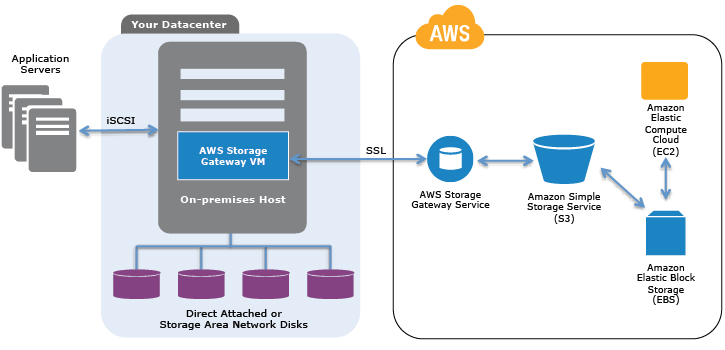Expanding the Cloud - The AWS Storage Gateway
Today Amazon Web Services has launched the AWS Storage Gateway, making the power of secure and reliable cloud storage accessible from customers’ on-premises applications.
We have been working closely with our customers on their requests to bring the power of the Amazon Web Services cloud closer to their existing on-premises compute infrastructures. The Amazon Virtual Private Cloud extends on-premises compute with all the power of AWS, making it elastic, scalable and highly reliable. AWS Identity and Access Management brings together on-premises and cloud identity management. VM Import allows our customers to move virtual machine images from their datacenters to the Cloud and Amazon Direct Connect makes the network latencies and bandwidth between on-premises and AWS more predictable. With the launch of the AWS Storage Gateway our customers can now integrate their on-premises IT environment with AWS’s storage infrastructure.
The AWS Storage Gateway is a service connecting an on-premises software appliance with cloud-based storage. Once the AWS Storage Gateway’s software appliance is installed on a local host, you can mount Storage Gateway volumes to your on-premises application servers as iSCSI devices, enabling a wide variety of systems and applications to make use of them. Data written to these volumes is maintained on your on-premises storage hardware while being asynchronously backed up to AWS, where it is stored in Amazon S3 in the form of Amazon EBS snapshots. Snapshots are encrypted to make sure that customers do not have to worry about encrypting sensitive data themselves. When customers need to retrieve data, they can restore snapshots locally, or create Amazon EBS volumes from snapshots for use with applications running in Amazon EC2.

Here are three example use cases that we envision for the AWS Storage Gateway. The first one is using the AWS Storage Gateway to back up your data to Amazon S3’s highly reliable storage environment. Amazon S3 is designed to sustain the concurrent loss of data in two facilities, redundantly storing your data on multiple devices across multiple facilities in an AWS Region. So, backing up your data to Amazon S3 means a lot less headaches worrying about your local storage environment.
The second use case is where customers want to move data between local infrastructure and the Amazon Web Services cloud to provide access to applications and other computations running in Amazon EC2. The use of the Amazon EBS snapshot format means the data that was on-premises can be restored as an Amazon EBS volume mounted to an Amazon EC2 instance.
The third use case, cloud-based Disaster Recovery, is a specific variation of the previous two. If there is a failure in your local infrastructure, you can quickly launch a DR environment in Amazon EC2 which will have full access to the data snapshots backed up into Amazon S3 by the AWS Storage Gateway.
For more information on the AWS Storage Gateway, you can visit the detail page Jeff Barr over at the AWS Developer Blog has more details.